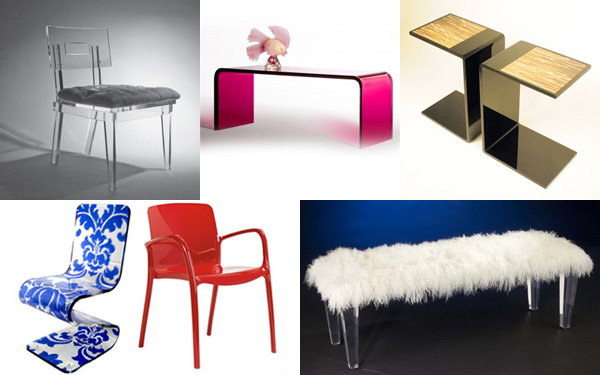(pronounced eh-KRIH-lihk REH-zihn)
Though it’s likely you’ve worked with acrylic paints in art class, chances are slim that you’ve melted down this raw thermoplastic material — consisting of methacrylic acid or polymerizing acrylic acid or an offshoot of either — and cast or molded your own glitzy, futuristic, glass-like pieces. While it first emerged in the mid-1930s, relatively recent technologies have added some versatility to designing with acrylic resin — i.e., the ability to utilize vibrant colors, as well as the ability to print sharp images onto acrylic that will maintain over time. Also referred to as Lucite (DuPont’s trade name for an acrylic plastic), this material is not only suitable for furniture, but also for shelves, frames, drapery hardware, lamp bases, art, and other accessories.



